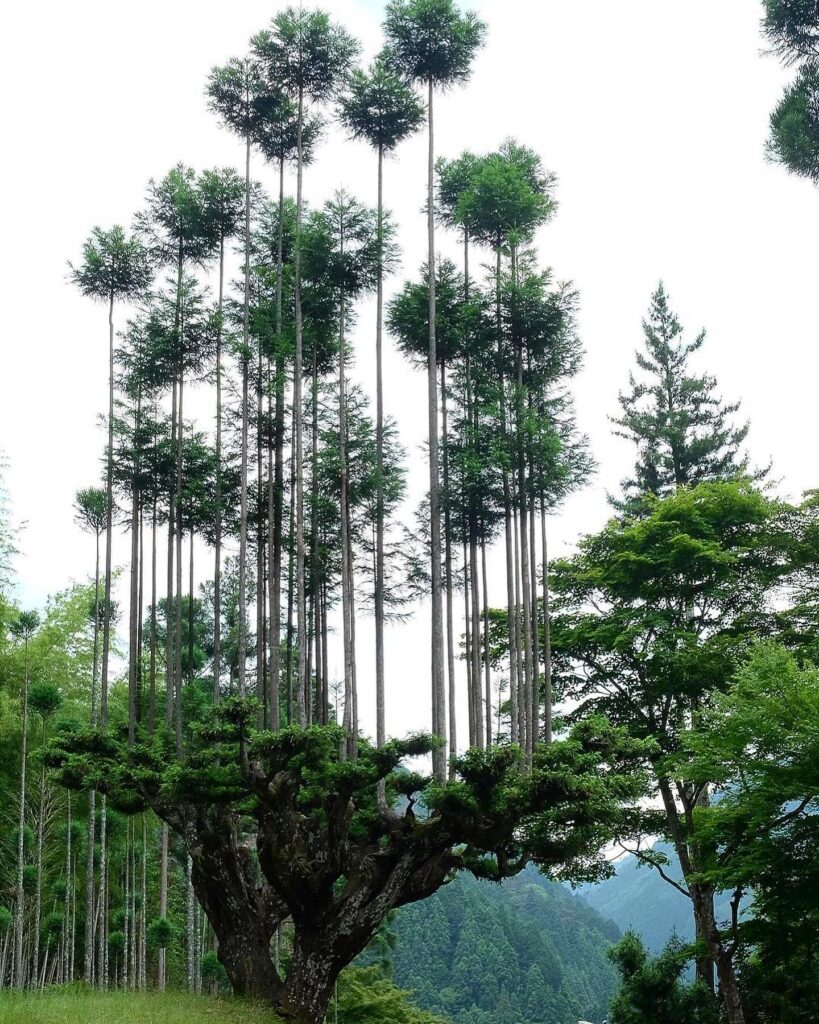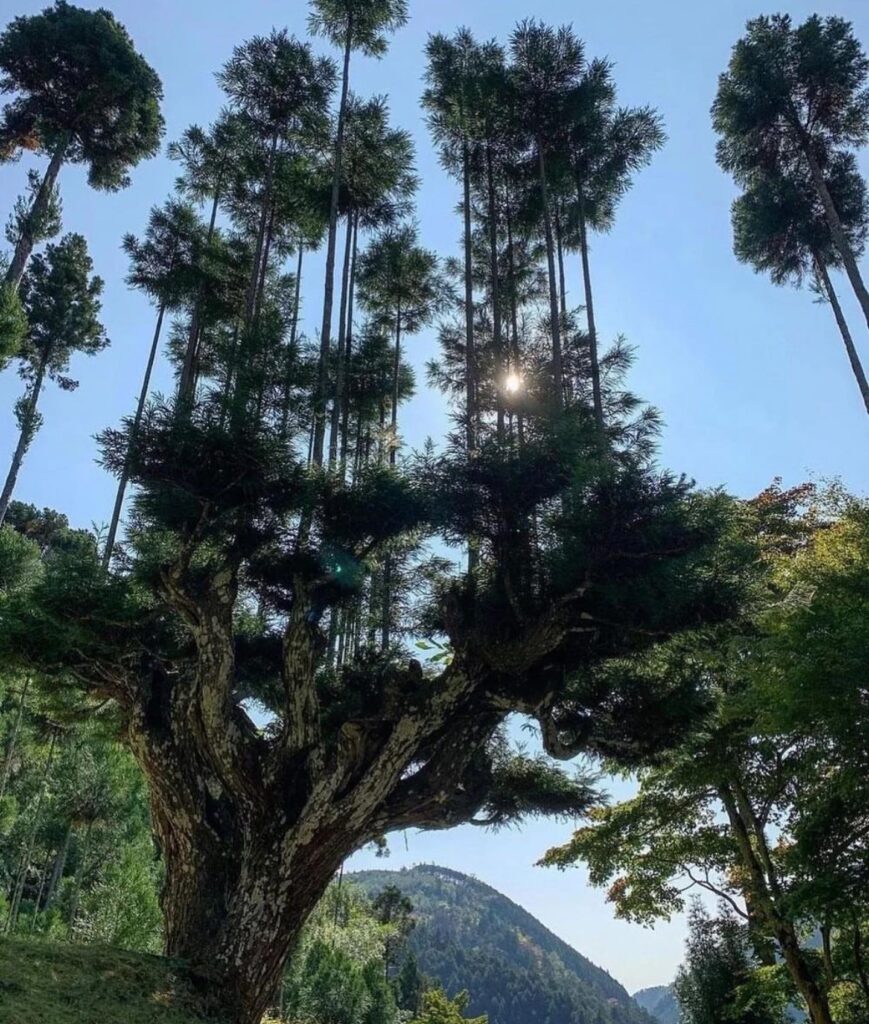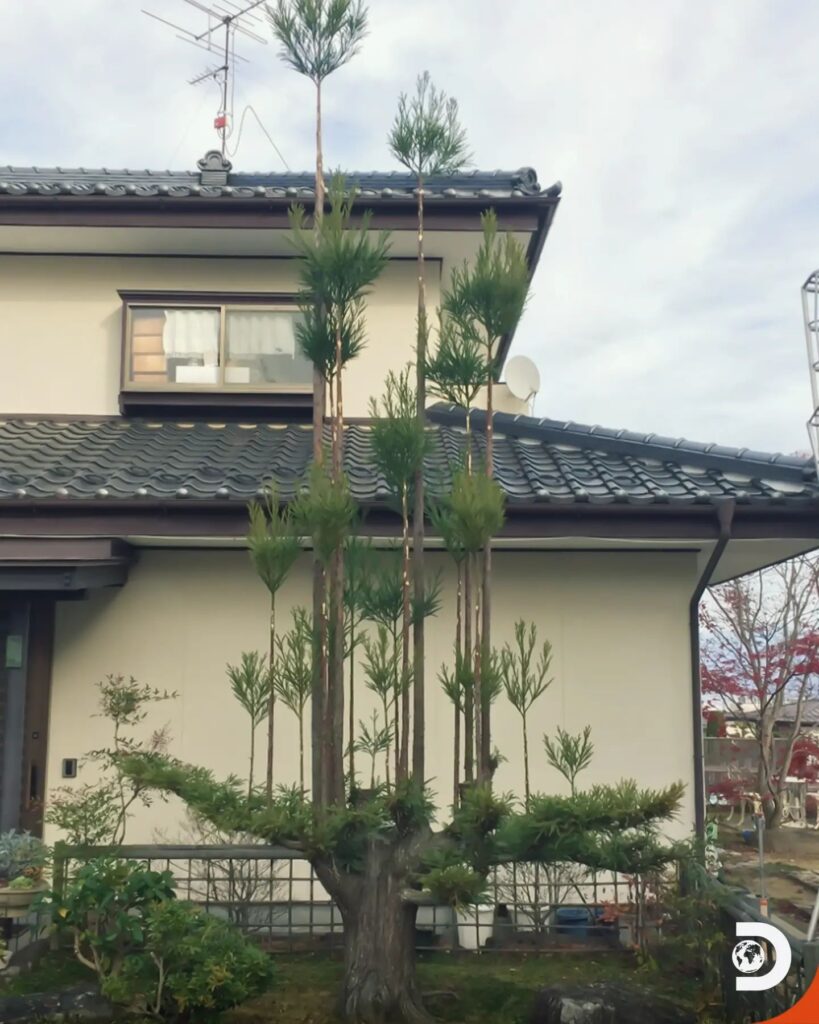For over 700 years, Japan has been a leader in sustainable wood production, ingeniously managing its forestry resources without the widespread cutting down of trees. This unique approach, deeply rooted in ancient practices, highlights Japan’s profound commitment to environmental conservation and sustainable forestry management. Let’s delve deeper into how Japan has sustained this remarkable feat and the model it sets for sustainable development worldwide.

Image From Instagram by @aplasticplant
Table of Contents
Understanding Japan's Historical Approach to Forestry

Image From Instagram by @lily_kwong
Japan’s sustainable forestry practices date back to the Edo period (1603-1868), guided by a philosophy that emphasizes harmony between humans and nature. Central to this philosophy is the concept of “Satoyama,” landscapes that border mountain foothills and villages where people have sustainably managed woodland for centuries. This approach involves selective cutting techniques that ensure the forest’s regeneration and biodiversity, rather than clear-cutting that leads to deforestation and ecological imbalance.
The Managed Forestry Technique: A Model for Sustainability
At the heart of Japan’s forestry management lies the daisugi technique, a practice originating in the 14th century. Daisugi allows for the production of timber without cutting down trees by pruning branches in a way that encourages them to grow straight and tall, ideal for construction purposes. This method not only prevents deforestation but also enables faster growth rates, ensuring a sustainable supply of wood.

Image From Instagram by @discoverychannelin
Biodiversity and Climate Change Mitigation
Japan’s traditional forestry practices contribute significantly to preserving biodiversity and combating climate change. By maintaining the health and diversity of forests, these practices enhance ecosystems’ resilience, enabling them to adapt to climate change. Moreover, the carbon sequestration capacity of well-managed forests plays a crucial role in mitigating global warming, embodying an early form of climate-smart forestry.
The Future of Sustainable Forestry
As the world grapples with the dual crises of climate change and rapid deforestation, Japan’s centuries-old model of sustainable wood production offers valuable lessons. It shows that it is possible to meet human needs for wood and forest products without compromising the health of our planet. Embracing and adapting these sustainable forestry practices globally could be crucial in achieving environmental sustainability and ecological balance.
Japan’s longstanding tradition of sustainable wood production without cutting trees serves as a testament to the possibilities of harmonious coexistence with nature. As we move forward, integrating these time-tested methods with modern forestry practices can pave the way for a more sustainable and resilient future.
Daisugi: Japan's 700-Year-Old Eco-Innovation in Wood Production
Japan’s 700-year dedication to sustainable wood production epitomizes its profound harmony with nature. Central to this tradition is the ancient technique known as Daisugi, a method developed in the 14th century that not only allows for the sustainable harvesting of timber but also fosters the growth and preservation of forests. This age-old practice highlights Japan’s longstanding commitment to environmental stewardship, ensuring that high-quality wood can be produced without compromising the ecosystems that future generations will inherit.
The inception of Daisugi in Kitayama was driven by a scarcity of saplings, necessitating an innovative approach to forestry. By selectively pruning cedar trees, practitioners were able to cultivate straight, knot-free lumber, an essential requirement for the construction of temples and other structures. What began as a practical solution to a pressing need has flourished into a sustainable cultural practice, embodying Japan’s deep-rooted ethos of resource management innovation.
The Daisugi technique involves the meticulous planting and pruning of cedar trees. By hand-pruning the shoots every two years and leaving only the top boughs, foresters encourage the growth of uniform, high-quality timber. This method not only yields superior lumbers but also stands as a testament to Japan’s ability to develop eco-friendly solutions that align with the natural world. Through Daisugi, Japan has nurtured a legacy of sustainable wood production that continues to inspire a global audience, showcasing the possibilities of living in unity with our environment.

Image From Instagram by @discoverychannelin
Eco-Friendly Wood Production: The Brilliance of Daisugi's Long Harvesting Cycle
The longstanding tradition of daisugiculture, Japan’s approach to sustainable forestry stands out through its meticulously orchestrated long harvesting cycle. Spanning approximately two decades, this cycle is a testament to patience and precision in nurturing daisugi trees. Throughout these years, each tree receives dedicated care, focused on optimizing both the growth conditions and the quality of wood produced. This prolonged period of cultivation is key to achieving the robust and resilient timber daisugi is renowned for.
Equally remarkable is the capacity of mature daisugi trees, or “tree stock,” to generate a prolific number of shoots – often reaching up to a hundred from a single base. This natural propensity for abundant shoot growth ensures a consistent and renewable source of high-quality wood. It signifies a forward-thinking approach to forestry, where the needs of the present are met without compromising the ability of future generations to meet their own.
Together, the long harvesting cycle and the abundant shoot production encapsulate the essence of daisugi’s sustainability. This ancient yet innovative method not only preserves the environment but also secures a legacy of renewable wood production for generations to come.
Daisugi and the Art of Adaptation: The Evolution of Cedar Wood from Muromachi Architecture to Modern Applications
Daisugi, a refined technique stemming from the necessity to cope with limited resources, emerged not only as a response to the scarcity of raw materials but also as an adaptation to evolving architectural aesthetics. In the 14th century, the advent of sukiya-zukuri architecture, noted for its streamlined and stylized forms, significantly spurred the demand for premium quality wood. This style of architecture, which sought to blend simplicity with sophistication, necessitated materials that met its exacting standards in both form and function.
The cedar wood, central to the daisugi technique, was traditionally revered for its quality and versatility. During the Muromachi period, this esteemed wood played a crucial role in Japanese interior architecture. It was prominently used in the construction of tokonoma alcoves within tea houses, spaces dedicated to the artful display of scrolls and flowers, reflecting a deep appreciation for aesthetics and craftsmanship. Additionally, the cedar’s strength and beauty made it an ideal choice for the main pillars used in these settings, further underscoring its significance in traditional Japanese architecture.
Despite a shift in architectural trends and a decline in its traditional uses, the value of this cedar wood has not waned. Today, its legacy continues as it finds new life in various applications, extending from chopsticks to furniture. This adaptability underscores the enduring appeal and sustainability of materials traditionally used in Japanese construction, demonstrating how historical practices can find relevance and utility in the modern world. The story of daisugi and its prized cedar wood is a testament to the art of adaptation, serving as a bridge between the architectural demands of the past and the diverse needs of the present.

Image From Instagram by @aplasticplant
Addressing Demand through Ingenuity
As architectural demand for wood surged, the daisugi technique emerged as an innovative response, enabling the cultivation of more wood within shorter timeframes, all the while upholding both quality and ecological sustainability.
Superior Characteristics of Wood
Wood crafted via the daisugi method stands out for its exceptional attributes. It boasts a flexibility that is 140% greater than that of ordinary cedar, alongside a density and strength that are 200% superior, ensuring unparalleled durability.
Sustainable Forestry at Its Finest
The daisugi technique is a prime example of sustainable forestry, employing selective pruning strategies that naturally encourage the regeneration of trees, fostering a thriving and resilient forest ecosystem for generations to come.
A Mosaic of Heritage
Beyond its environmental contributions, daisugi is steeped in significant cultural and historical depth. This age-old Japanese forestry approach is a precious inheritance, passed from one generation to the next, symbolizing a deep-rooted connection between nature and human artistry.
The Legacy of Innovation and Sustainable Forestry Practices
The concept of Daisugi, stemming from ancient Japanese forestry traditions, represents a beacon of innovation and sustainability. This practice underscores the profound understanding and respect ancient societies had towards nature and resource management. Daisugi, in its essence, is a testament to the ingenious approach of utilizing resources in a manner that ensures longevity and sustainability for future generations.
Globally, numerous cultures have echoed similar sentiments towards forestry, developing methods that mirror the sustainable ethos of Japan’s Daisugi technique. In Europe, long-standing practices like coppicing and pollarding are prime examples of such sustainable methods. Coppicing is a process where trees are cut down to their base, encouraging new and vigorous growth, while pollarding involves cutting the trees at a higher level on the trunk. These methods exemplify a cyclical approach to resource management, enabling continuous harvests from the same trees and, thus, a sustainable timber supply.
Beyond these, the tropical regions of the world present an integration of agriculture and forestry known as agroforestry. This innovative practice intermingles crop cultivation with tree farming, creating a multifaceted and sustainable land-use system. Agroforestry is celebrated for its myriad benefits; it not only provides timber and forest products but also plays a crucial role in biodiversity conservation, carbon sequestration, and the enhancement of soil health.
The legacy of Daisugi, along with the global tapestry of sustainable forestry practices like coppicing, pollarding, and agroforestry, highlights a universal acknowledgment of the importance of sustainable resource management. These practices furnish a blueprint for future generations, illustrating that with ingenuity and respect for the natural world, it is possible to meet human needs while preserving the environment for future generations. The collective wisdom encapsulated in these traditional methods offers invaluable insights into fostering a more sustainable and harmonious coexistence with nature.
Daisugi serves as a testament to the potential for ancient practices to contribute to modern sustainability challenges, embodying a legacy of harmony between human needs and environmental stewardship.
FAQs: Japan's 700-Year Legacy of Sustainable Wood Production Without Tree Cutting
Japan has achieved this through a practice called “Daisugi.” Daisugi is a technique originated in the 14th century, used by samurai to produce timber without deforestation. They practiced coppicing, where trees, particularly Kitayama Cedar, are pruned to stimulate the growth of straight, uniform shoots suitable for timber. This method allows continuous harvest of wood from the same tree for many generations.
Initially, Daisugi was developed to address the shortage of flat land for growing trees needed for timber in Kyoto’s Kitayama area. The technique aims to produce timber for construction and various uses, while preserving forests and maintaining sustainability by preventing deforestation and promoting tree health and longevity.
Daisugi involves the careful pruning of tree branches to encourage the growth of straight, slender shoots upwards. These shoots can be harvested without killing the main tree, which continues to live and produce new shoots. This technique creates a sustainable cycle where trees are not cut down but are continuously used for wood production.
The Daisugi technique conserves forests, enhances biodiversity, reduces soil erosion, and mitigates the carbon footprint associated with traditional logging practices. By avoiding deforestation, it helps in preserving habitats for wildlife, maintaining ecological balance, and supporting carbon sequestration.
Yes, Daisugi is still practiced today, primarily as a traditional method of sustainable forestry in Japan, though on a much smaller scale than in the past. Its principles can be adapted to various regions and tree species worldwide, promoting sustainable forestry practices beyond Japan. However, the success of such adaptation depends on local climate, soil conditions, and species selection.





























